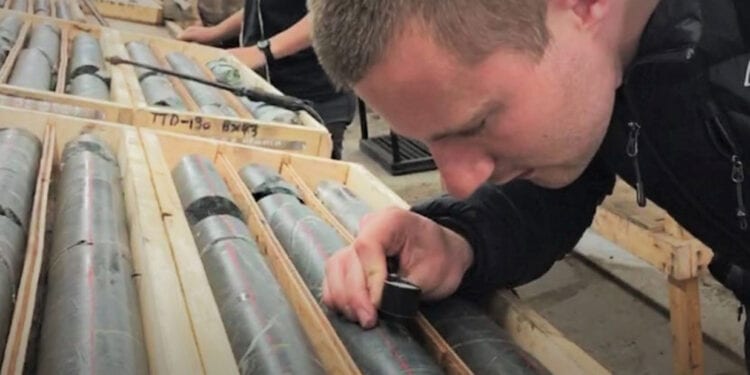Study To Follow Up Tatogga Property Discoveries.
GT Gold Corp. (TSXV:GTT) has elected to undertake a “green rock study” on its Tatogga property in British Columbia.
The Quash Pass target covers an area of approximately 14 square kilometres and is located seven km to the south-southwest of the Saddle North and Saddle South discoveries. The target is a large- scale surface anomaly with reactive host rocks, chemistry variations, alteration, major structures and chemical signatures of both vein and porphyry style mineralisation.
The nine, very widely spaced reconnaissance boreholes drilled in 2020, returned narrow anomalous to weakly mineralised intersections for gold and copper. All the boreholes intersected significant distal, chlorite and epidote (green rock), alteration characteristic of mineralised porphyry systems, and anomalous base and precious metal mineralisation.
Further work will test deeper, blind targets by reviewing all available geochemical, geophysical and alteration vectors, to target potential deeper, blind mineralisation.
The “green rock study” will use mineral chemistry as a vectoring tool to target potential mineralised potassic alteration zones in future drilling programmes.
The company completed an initial drill programme at the Quash Pass target located approximately seven km to the south-southwest of the Saddle North gold rich copper porphyry deposit and the Saddle South precious metal rich vein systems within the Tatogga Project.
A total of nine very widely spaced boreholes for 4,841.14m were completed over the Quash Pass target. The programme was designed to commence the testing of a large area of coincident precious metal and base metal soil geochemical anomalies, geophysical anomalies (both Induced Polarisation (IP) chargeability and magnetic), structural anomalies, surface alteration and evidence for both vein style and intrusion style mineralisation.
At the Quash Pass target the initial reconnaissance drilling intersected extensive chlorite and to a lesser extent epidote in drill core. Chlorite and epidote are great repositories of trace elements, the concentrations of which change systematically with distance from the centre of a mineralised system and have been shown to define a deposit footprint up to five kilometres or more beyond a deposit. This technique of using mineral chemistry to vector to mineralization has been shown to be successful in studies across five countries (Canada, USA, Chile, Australia and Philippines).
Given the extensive chlorite alteration encountered in the boreholes at Quash Pass, the company has collected a total of 22 samples from the seven boreholes. The samples varied in length from 10-20 cm of drill core, from which both a thin and thick polished section was cut, as well as an aliquot prepared and sent for whole rock analysis.
The selected sections are currently being investigated by optical microscopy as well as X-ray mapping by a Scanning Electron Microscope (SEM) and Laser Ablation-ICP- MS work. The company expects the results in the second half of 2021 which will then guide further work at Quash Pass.












